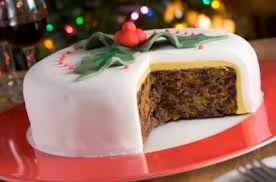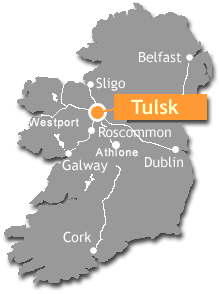Christmas
Eve
Noigh na
Nollaig
24th December
1.
You should try
to finish work by midday and get home before night-fall. Try to return to the
homeplace on Christmas Eve.
2. During
medieval times, the decorated log was ceremoniously carried into the home on
Christmas Eve in a remembrance of the pine logs used in the sacred fires, and
placed in the fireplace. Traditionally this was lit with the saved stump of
last year's log, and then it was burnt over the twelve days of the winter
celebration, and its ashes were kept until the following year to sprinkle on
the new log, so that the fortune would be passed on from year to year.
3. Some observe
Christmas Eve as a fast day. (Three Lents were kept – from Ash Wednesday to Easter, after Easter for
60 days up to Pentecost or Whitsun, and from Martinmas in November to Christmas,
in remembrance of the fasts of Christ, Moses, and Elijah.) If you do eat, perhaps it should be fish with
white sauce and potatoes. End your fast after candles are lit at 6 o’clock and
the Angelus Bell is rung, although the holiday has
usually began with the appearance of the first star of Christmas Eve.
4. Start
last preparations for the most elaborate dinner of the year, Christmas Dinner.
Traditionally stuffed Goose was the most common dish. Oysters were also very
popular. Boiled Ox head was the favourite dish in Armagh, Tyrone, Monaghan and
other places in the north.
5. In Leinster and
Munster the wealthy prepared many dishes, chicken or goose, also bacon and
mutton, cakes, puddings, and pies in preparation.
6.
Some puddings
were made on Christmas Eve for final cooking on Christmas Day. In County Wexford they made Cutlin pudding – a
porridge of wheaten meal, sugar, dried fruits and spices, made into a ball as
big as a football and wrapped up in muslin for boiling.
7. In Donegal they
make a Christmas pie in the shape of a manger decorated with strips of pastry.
8. Place large
candles into sconces made from a turnip or ‘piggin’ filled with bran or flour.
One for each of the adults in the house. Little coloured candles should be set
up for the children of the house.
9. Holly, ivy and
mistletoe are an important part of decorating the Irish house at Christmas.
Holly wreaths and bunches of mistletoe hanging from the doorway are ancient
traditions. Mistletoe is such a powerful symbol that two enemies meeting under
a branch must call a truce until the Christmas period. Decorate
all candles with holly and ivy. One big candle, the Coinneal Mór na Nollaig,
is prominently displayed, usually in a window.
10. Light
all Christmas candles with a prayer. The
candle in the window also indicated a safe place for priests to perform mass
as, during Penal Times, this was illegal and the penalties severe.
11.
Light three
candles or a three branched candle in honour of the Holy Family.
12. Have the youngest person light the principal candle because an old Irish
tradition is ‘they will live the longest and send the custom furthest’. Have a candle in every window. Leave
a candle for each of the family who has died since
last Christmas to welcome them in. Candles are lighted to show the way to
Joseph and Mary. Take the children to a high place to show them all the candles
in the surrounding houses.
13. If the principal candle goes out for some reason it is a bad omen,
possibly of the death of the head of the household during the coming year.
14. In some parts of
Connacht a big ceremonial dinner is prepared for this evening. Pork or bacon
from the pig slaughtered at Martinmas or Mutton with potatoes and turnips.
15. After dinner gather the family around the
fire. Cut the Christmas cake and make tea, brandy punch and other festive
drinks. Give sweets and apples to the children, an apple as part of the evening meal would give protection against bad
health during the coming year.
16. Sing
carols. Saint Francis of Assisi is again credited with bringing in a Christmas
tradition by introducing carols into the formal worship
of the church during a Christmas Midnight Mass in a cave in Greccio, in the
province of Umbria in 1223. The Wexford or Enniscorthy Carol is the oldest in
Europe.
17.
Leave doors
unlocked on Christmas Eve for travellers returning late
or those lost with no place to go. Leave the table set for three people; the Holy Family.
18.
Put on a good
fire before going to bed and let candles burn all night, extinguishing them
just before the first mass. This could now be the lights on the tree?
19. Put bread made with caraway seeds and raisins on the table, along with
some milk, in preparation for Christmas visitors. Possibly the origin of
leaving sherry and mince pies out for Santa?
20. Cold
weather with frost or snow will indicate a mild spring with absence of illness.
There is an old Irish saying, ‘A green Christmas makes a fat churchyard’.
21. When it snowed on Christmas Eve, it was thought geese were being plucked
in heaven.
22 No prayer will
be unanswered on Christmas Eve and if you die on Christmas Eve you will go
right into heaven.
23. At midnight leave the cows and other animals alone to kneel in adoration
of the Christ Child. Animals are given the power of speech at this time but
will not often use it in front of humans; if you do hear them speak it is often
a bad prediction for your future that you hear… Feed the animals a Christmas
treat.
24. A new moon on Christmas Eve is thought to be
very lucky as was a starry sky, this would bring
a good summer harvest.
25. The cock will crow on unusual times -to hear him crow at midnight will be
a good omen.
26. There is a belief that Bees
woke from their hibernation at Christmas to hum a psalm 100 to the new born
babe. As with the animals talking, the bees do not like to let humans hear
them.
27.
There are other superstitions associated with
Christmas Eve, pairs of shoes should not be separated in order to keep the
peace and more seriously, death could be foretold by the shape of a shadow at
the fireside; a headless shadow was a portent of death.
Compiled by B. D'Alton



















